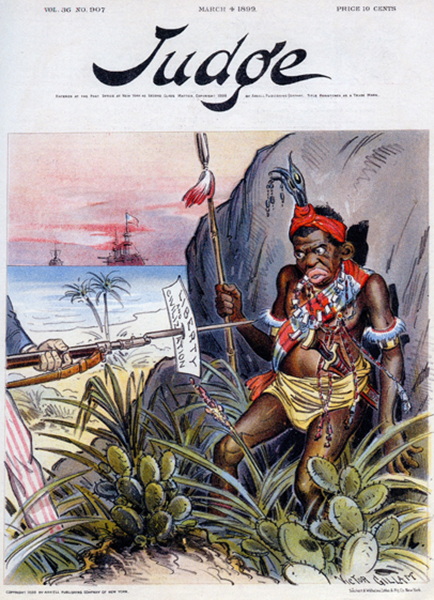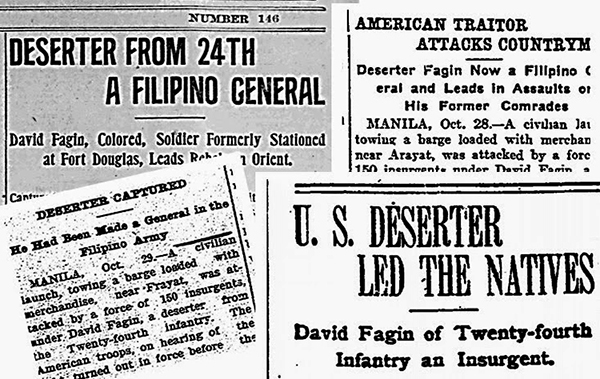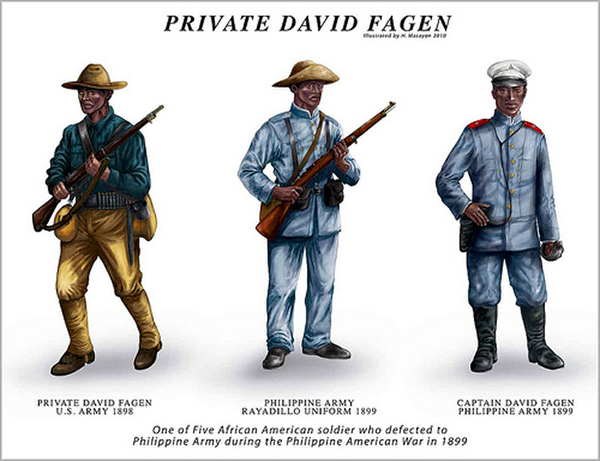Star Wars, Race, and American Imperialism
By Lincoln Cushing
The opening scene of Star Wars Episode VII: The Force Awakens shows an Imperial Stormtrooper who is ordered to fire on a group of innocent villagers. Instead, he has a crisis of conscience, escapes, and poses as a leader in the Rebellion. His conversion, though lightly sketched, is genuine, and Finn is elated to have found a home with those fighting the repressive Dark Side brutality.
Jamal Igle wrote in a blog post on The Nerds of Color website, “For the Love of FN-2187: Why John Boyega as Finn is one of the Best New Characters in Star Wars”:
“Finn is a character without an identity when we first meet him. One of the many faceless drones amongst The First Order, Finn is the first Stormtrooper we ever see remove his helmet in any of the films. We’re witnessing a birth in a way. All he wants to do is get away from the people who have oppressed him, as far as possible and never return. He’s never known a life outside of being a Stormtrooper, the mission on Jakku possibly being the first time he’s seen actual combat. What he saw shocked him so much, it shook his programming and for the first time, he saw things for what they truly were.”
The ironic thing is, this scenario already happened, in 1899.
In 1898 the United States leapt into the Spanish-American War, a heavy-handed campaign of opportunity that was so grotesque that its centennial was barely celebrated, let alone mentioned. (It urged me to post my first web article, in 1998). The second part of that campaign, the Philippine-American War, was even more loathsome and less remembered. It’s beyond the scope of this essay to delve into those wars, but suffice to say they established our young nation as an imperial force to be reckoned with. It’s where our military refined such as tactics as “waterboarding” and “strategic hamlets,” and gave rise to the American Anti-Imperialist League.

“He wouldn’t take it any other way,” cover illustration from Judge magazine, March 4, 1899.
From The Forbidden Book: The Philippine-American War in Political Cartoons, 2004.
Four regiments of “Buffalo Soldiers,” who had earlier been assigned to fight American Indians and served in the Spanish-American war in the Caribbean, were joining that bloodbath in the Philippines. But many of the black soldiers became so upset with their treatment by white officers and soldiers, as well as resisting their role in enforcing a white national military policy on other people of color, that six took the extreme step of desertion. In addition, as many as 24 white soldiers deserted for various reasons.
Desertion during war is a high enough crime (all were sentenced to death, but only two were executed), but at least one took the extra step of joining the Filipino resistance.
David Fagen was an African American soldier sent to fight in the Philippines in the summer of 1899, and on November 17 he left his post and joined the guerilla forces. Scholar E. San Juan, Jr. described his commitment to the cause:
“Instead of simply escaping to an isolated native community and withdrawing from the conflict, Fagen embraced the revolution with such boldness and energy that no one could be blind to the depth of his commitment to the Filipino cause, especially in the light of George Rawick’s reminder that Afro-American slaves ‘do not make revolution for light and transient reasons.’ “
Efforts to capture Fagen proved challenging, and he was never caught. A bounty of $600 collected by a Filipino defector, but the partially decomposed head was never positively identified.
Fagen’s conversion did not sit well with the establishment black press, but even they had a hard time ignoring the fundamental racism of that war. The Indianapolis Freeman, editorialized in December, 1901, “Fagen was a traitor and died a traitor’s death, but he was a man no doubt prompted by honest motives to help a weakened side, and one he felt allied by bonds that bind.”
Finn was following in some very heavy footsteps when he doffed his bloodied storm trooper helmet and joined the people he’d been trained to consider the enemy. Perhaps the next episode of Star Wars will feature a Stormtrooper rights movement, Stormtrooper underground newspapers, and Stormtrooper coffeehouses.
Probably not.
___________________________◊◊◊___________________________
Further links:
“An African American Soldier in the Philippine Revolution: An Homage to David Fagen” by E. San Juan, Jr., 2009


Great piece. Question though, how is it “ironic” that somehow a fantasy film had a scenario like one in history? Thank you.